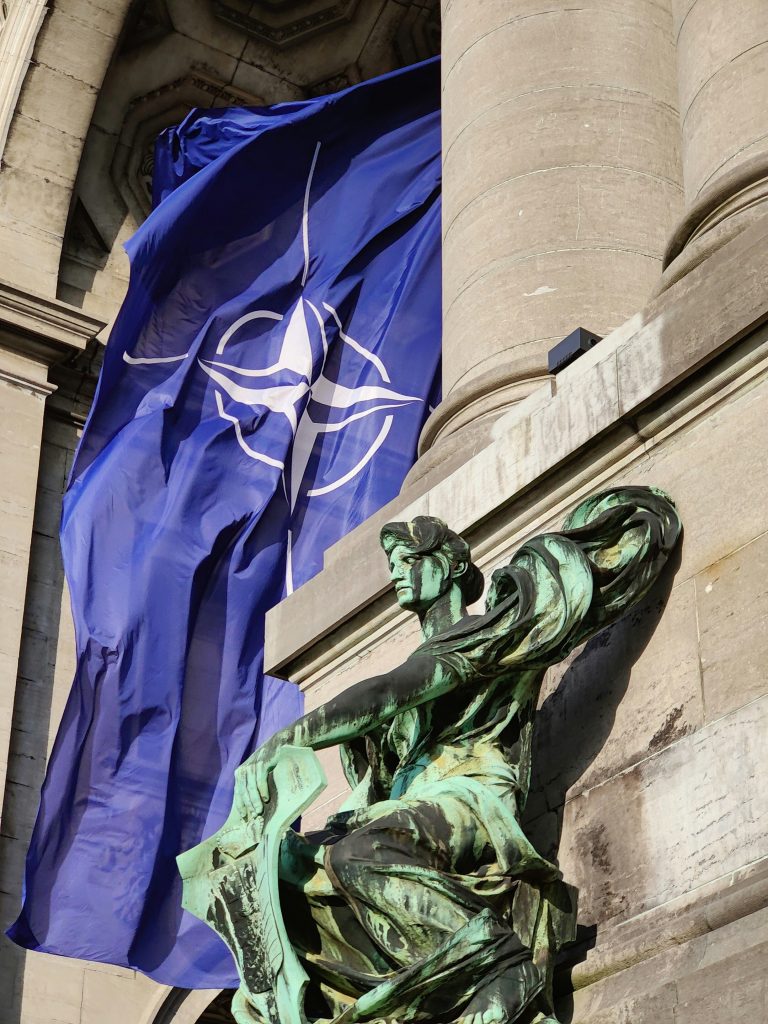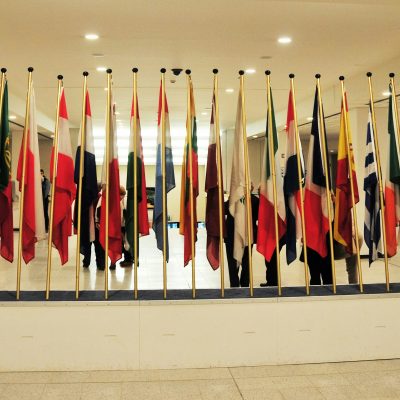Behind the façade of the Hague Summit, the disintegration of the transatlantic link

NATO Summits are important moments in the life of the Alliance in that they must define its major strategic orientations and, secondarily, demonstrate the cohesion of the allies. However, neither of these objectives was achieved at the Hague Summit on 24 and 25 June, the first of Donald Trump’s second term in office. The cohesion of the Alliance, rediscovered in the context of the war in Ukraine, no longer exists since the election of Donald Trump in November 2024, who has done so much to undo the transatlantic link at the heart of the Alliance’s credibility. So much so that one of NATO Secretary General Mark Rutte’s priorities for the Summit was to limit its duration to the strict minimum, in order to avoid any diplomatic clashes with the American President, as was the case at the Alliance’s 2018 summit in Brussels, and more recently at the G7 summit in Canada.
American abandonment
Over the past six months and right up to the eve of the Hague Summit, President Trump’s statements casting doubt on the centrality of the Alliance’s defence clause (Article 5 of the Washington Treaty) and therefore on the American commitment to defend its allies in the event of an attack, at a time when the United States’ strategic priorities are elsewhere (from China to Iran), are all cracks in the Alliance’s cohesion and credibility.
As for strategic direction, the disunity of the allies makes it impossible today to reach any agreement on the Alliance’s raison d’être, and therefore also on its future trajectory. Admittedly, the Summit’s Final Declaration (five short paragraphs long) recalls the “ironclad commitment [of the allies] to collective defence as enshrined in Article 5 of the Washington Treaty” and states that the allies are united in the face of “the long-term threat posed by Russia to Euro-Atlantic security”. But the language on Russia, in contrast to that of previous summits, underlines the profound disagreement between Americans and Europeans on the nature of the Russian threat.
Moreover, the commitment made at the Washington summit in 2024 to revise the Alliance’s “strategic approach” to Russia has not been kept, due to Trump’s rapprochement with President Putin. Similarly, this time Ukrainian President Zelensky was only invited to the official dinner and not to the discussions, and of course there was no mention of “Ukraine’s future in NATO” (the hallowed phrase) in the Final Communiqué.
European tetany
For Europeans, the questioning of the US commitment to NATO is a source of a kind of tetany. Trump’s abandonment of the Europeans reminds them of their vulnerability and dependence on the United States. Above all, what the Hague Summit showed once again was the unfailing determination with which the Europeans, and notoriously the Secretary General of the Alliance, are trying to appease the hegemon. To say or do nothing that might lead President Trump to slam the door on the Summit or, more seriously, on the Alliance itself.
In recent months, the brutality of the American President has certainly given rise to unprecedented statements by European leaders in favour of the autonomisation of Europe or the Europeanisation of NATO. The future German Chancellor, Friedrich Merz, declared shortly after his victory in the February 2025 parliamentary elections that his “absolute priority will be to strengthen Europe as quickly as possible so that we can, step by step, achieve independence from the United States”. For his part, the Polish prime minister, Donald Tusk, recommended that Poland “equip itself with the most modern nuclear and non-conventional weapons capabilities”, adding that “serious discussions” along these lines had been initiated with France. Two statements unimaginable a year ago from the leaders of notoriously Atlanticist countries. Yet all European countries are still hanging on the American President’s every word, in the hope that the worst will not happen. To avoid it, they are prepared to go to any lengths, including in the financial sphere.
New defense spending commitments
The Hague Summit will probably be remembered as the one at which the allies agreed, under strong American pressure, to substantially increase their defence spending. From a target of 2% of their respective GDP devoted to defence (agreed by NATO in 2014), the allies agreed to increase this to 5%, divided into 3.5% for defence in the strict sense and 1.5% for related expenditure. The 5% figure had been put forward by President Trump in January. After being described as absurd by all observers, it has finally been endorsed. Its division into two categories of expenditure made it more acceptable. In practice, however, it is the 3.5% figure that is likely to be the benchmark rather than the 5% or 1.5% devoted to expenditure that has yet to be defined and which, moreover, may not fall within NATO’s remit. With the exception of Spain, which obtained an exemption, the allies have given in on their spending commitments, but few consider that the 3.5% objective is achievable (in 2035). It already is or will soon be in a number of Eastern European countries, but France, Germany and the UK will find it extremely difficult to come close. But perhaps the most important thing was the promise of spending, in order to satisfy Mr Trump, and not its implementation, which will in any case bring us into the post-Trump era.
What kind of European awakening?
Of course, the Summit’s Final Declaration makes no mention of the European Union or Europe. But in calling “to rapidly expand transatlantic defence industrial cooperation” and for the Alliance to “leverage our partnerships to promote defence industrial cooperation”, the allies are making a thinly veiled reference to the need for Europeans to work towards establishing a defence industrial base compatible with what is being done in a transatlantic framework. It should also be noted that the Summit included a meeting between the NATO Secretary General, the Ukrainian President and representatives of five European countries (France, the United Kingdom, Germany, Poland and Italy) grouped together in a new diplomatic format – known as the E5 – which could prefigure the emerging European pillar in NATO.
In the end, the allies succeeded this time in preserving the Alliance’s existence. Unfortunately, the continuing uncertainties do not allow Europeans to think seriously about what to do in the event of an effective American withdrawal from NATO. They still want to believe that the United States will continue to play a protective role, and are focusing on what they must do to preserve the status quo rather than on the dizzying scenario of European security without the Americans.




